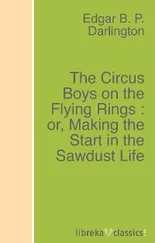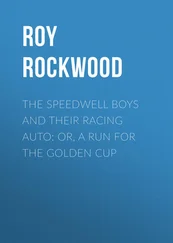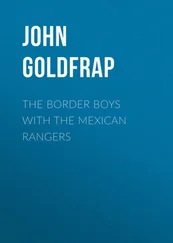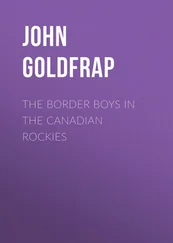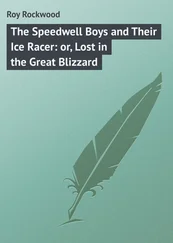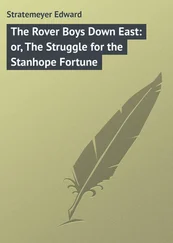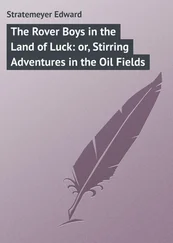Колсон Уайтхед - The Nickel Boys
Здесь есть возможность читать онлайн «Колсон Уайтхед - The Nickel Boys» весь текст электронной книги совершенно бесплатно (целиком полную версию без сокращений). В некоторых случаях можно слушать аудио, скачать через торрент в формате fb2 и присутствует краткое содержание. Год выпуска: 2019, Издательство: Penguin Random House LLC, Жанр: roman, на английском языке. Описание произведения, (предисловие) а так же отзывы посетителей доступны на портале библиотеки ЛибКат.
- Название:The Nickel Boys
- Автор:
- Издательство:Penguin Random House LLC
- Жанр:
- Год:2019
- ISBN:нет данных
- Рейтинг книги:4 / 5. Голосов: 1
-
Избранное:Добавить в избранное
- Отзывы:
-
Ваша оценка:
- 80
- 1
- 2
- 3
- 4
- 5
The Nickel Boys: краткое содержание, описание и аннотация
Предлагаем к чтению аннотацию, описание, краткое содержание или предисловие (зависит от того, что написал сам автор книги «The Nickel Boys»). Если вы не нашли необходимую информацию о книге — напишите в комментариях, мы постараемся отыскать её.
), that the world began to care.
The Nickel Boys — читать онлайн бесплатно полную книгу (весь текст) целиком
Ниже представлен текст книги, разбитый по страницам. Система сохранения места последней прочитанной страницы, позволяет с удобством читать онлайн бесплатно книгу «The Nickel Boys», без необходимости каждый раз заново искать на чём Вы остановились. Поставьте закладку, и сможете в любой момент перейти на страницу, на которой закончили чтение.
Интервал:
Закладка:
ALSO BY COLSON WHITEHEAD
The Intuitionist
John Henry Days
The Colossus of New York
Apex Hides the Hurt
Sag Harbor
Zone One
The Noble Hustle
The Underground Railroad
This is a work of fiction. All incidents and dialogue and all characters, with the exception of some well-known historical figures, are products of the author’s imagination and are not to be construed as real. In all other respects, any resemblance to persons living or dead is entirely coincidental.
Copyright © 2019 by Colson Whitehead
All rights reserved. Published in the United States by Doubleday, a division of Penguin Random House LLC, New York.
www.doubleday.com
DOUBLEDAY and the portrayal of an anchor with a dolphin are registered trademarks of Penguin Random House LLC.
Cover design by Oliver Munday
Cover photograph: Reflection, Harlem, New York, 1964 (detail) © Neil Libbert/Bridgeman Images
LIBRARY OF CONGRESS CATALOGING-IN-PUBLICATION DATA
Names: Whitehead, Colson, 1969– author.
Title: The nickel boys : a novel / Colson Whitehead.
Description: First edition. | New York : Doubleday, [2019]
Identifiers: LCCN 2018042961| ISBN 9780385537070 (hardcover) | ISBN 9780385537087 (ebook) | ISBN 9780385545440 (open market)
Classification: LCC PS3573.H4768 N53 2019 | DDC 813/.54—dc23 LC record available at https://lccn.loc.gov/2018042961
Ebook ISBN 9780385537087
v5.4
ep
Contents
Cover
Also by Colson Whitehead
Title Page
Copyright
Dedication
Prologue
Part One
Chapter One
Chapter Two
Chapter Three
Part Two
Chapter Four
Chapter Five
Chapter Six
Chapter Seven
Chapter Eight
Chapter Nine
Chapter Ten
Part Three
Chapter Eleven
Chapter Twelve
Chapter Thirteen
Chapter Fourteen
Chapter Fifteen
Chapter Sixteen
Epilogue
Acknowledgments
About the Author
For Richard Nash
PROLOGUE
Even in death the boys were trouble.
The secret graveyard lay on the north side of the Nickel campus, in a patchy acre of wild grass between the old work barn and the school dump. The field had been a grazing pasture when the school operated a dairy, selling milk to local customers—one of the state of Florida’s schemes to relieve the taxpayer burden of the boys’ upkeep. The developers of the office park had earmarked the field for a lunch plaza, with four water features and a concrete bandstand for the occasional event. The discovery of the bodies was an expensive complication for the real estate company awaiting the all clear from the environmental study, and for the state’s attorney, which had recently closed an investigation into the abuse stories. Now they had to start a new inquiry, establish the identities of the deceased and the manner of death, and there was no telling when the whole damned place could be razed, cleared, and neatly erased from history, which everyone agreed was long overdue.
All the boys knew about that rotten spot. It took a student from the University of South Florida to bring it to the rest of the world, decades after the first boy was tied up in a potato sack and dumped there. When asked how she spotted the graves, Jody said, “The dirt looked wrong.” The sunken earth, the scrabbly weeds. Jody and the rest of the archaeology students from the university had been excavating the school’s official cemetery for months. The state couldn’t dispose of the property until the remains were properly resettled, and the archaeology students needed field credits. With stakes and wire they divided the area into search grids, dug with hand shovels and heavy equipment. After sifting the soil, bones and belt buckles and soda bottles lay scattered on their trays in an inscrutable exhibit.
The Nickel Boys called the official cemetery Boot Hill, from the Saturday matinees they had enjoyed before they were sent to the school and exiled from such pastimes. The name stuck, generations later, with the South Florida students who’d never seen a Western in their lives. Boot Hill was just over the big slope on the north campus. The white concrete X ’s that marked the graves caught the sunlight on bright afternoons. Names were carved into two-thirds of the crosses; the rest were blank. Identification was difficult, but competition between the young archaeologists made for constant progress. The school records, though incomplete and haphazard, narrowed down who WILLIE 1954 had been. The burned remains accounted for those who perished in the dormitory fire of 1921. DNA matches with surviving family members—the ones the university students were able to track down—reconnected the dead to the living world that proceeded without them. Of the forty-three bodies, seven remained unnamed.
The students piled the white concrete crosses in a mound next to the excavation site. When they returned to work one morning, someone had smashed them into chunks and dust.
Boot Hill released its boys one by one. Jody was excited when she hosed down some artifacts from one of the trenches and came across her first remains. Professor Carmine told her that the little flute of bone in her hand most likely belonged to a raccoon or other small animal. The secret graveyard redeemed her. Jody found it while wandering the grounds in search of a cell signal. Her professor backed up her hunch, on account of the irregularities at the Boot Hill site: all those fractures and cratered skulls, the rib cages riddled with buckshot. If the remains from the official cemetery were suspicious, what had befallen those in the unmarked burial ground? Two days later cadaver-sniffing dogs and radar imaging confirmed matters. No white crosses, no names. Just bones waiting for someone to find them.
“They called this a school,” Professor Carmine said. You can hide a lot in an acre, in the dirt.
One of the boys or one of their relatives tipped off the media. The students had a relationship with some of the boys at that point, after all the interviews. The boys reminded them of crotchety uncles and flinty characters from their old neighborhoods, men who might soften once you got to know them but never lost that hard center. The archaeology students told the boys about the second burial site, told the family members of the dead kids they’d dug up, and then a local Tallahassee station dispatched a reporter. Plenty of boys had talked of the secret graveyard before, but as it had ever been with Nickel, no one believed them until someone else said it.
The national press picked up the story and people got their first real look at the reform school. Nickel had been closed for three years, which explained the savagery of the grounds and the standard teenage vandalism. Even the most innocent scene—a mess hall or the football field—came out sinister, no photographic trickery necessary. The footage was unsettling. Shadows crept and trembled at the corners and each stain or mark looked like dried blood. As if every image caught by the video rig emerged with its dark nature exposed, the Nickel you could see going in and then the Nickel you couldn’t see coming out.
If that happened to the harmless places, what do you think the haunted places looked like?
Nickel Boys were cheaper than a dime-a-dance and you got more for your money, or so they used to say. In recent years, some of the former students organized support groups, reuniting over the internet and meeting in diners and McDonald’s. Around someone’s kitchen table after an hour’s drive. Together they performed their own phantom archaeology, digging through decades and restoring to human eyes the shards and artifacts of those days. Each man with his own pieces. He used to say, I’ll pay you a visit later. The wobbly stairs to the schoolhouse basement. The blood squished between my toes in my tennis shoes. Reassembling those fragments into confirmation of a shared darkness: If it is true for you, it is true for someone else, and you are no longer alone.
Читать дальшеИнтервал:
Закладка:
Похожие книги на «The Nickel Boys»
Представляем Вашему вниманию похожие книги на «The Nickel Boys» списком для выбора. Мы отобрали схожую по названию и смыслу литературу в надежде предоставить читателям больше вариантов отыскать новые, интересные, ещё непрочитанные произведения.
Обсуждение, отзывы о книге «The Nickel Boys» и просто собственные мнения читателей. Оставьте ваши комментарии, напишите, что Вы думаете о произведении, его смысле или главных героях. Укажите что конкретно понравилось, а что нет, и почему Вы так считаете.
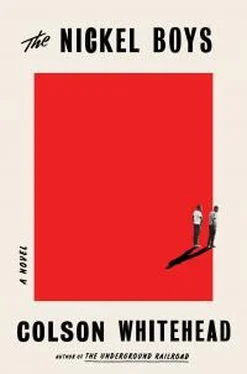
![Колсон Уайтхед - Подземная железная дорога [litres]](/books/411182/kolson-uajthed-podzemnaya-zheleznaya-doroga-litres-thumb.webp)
